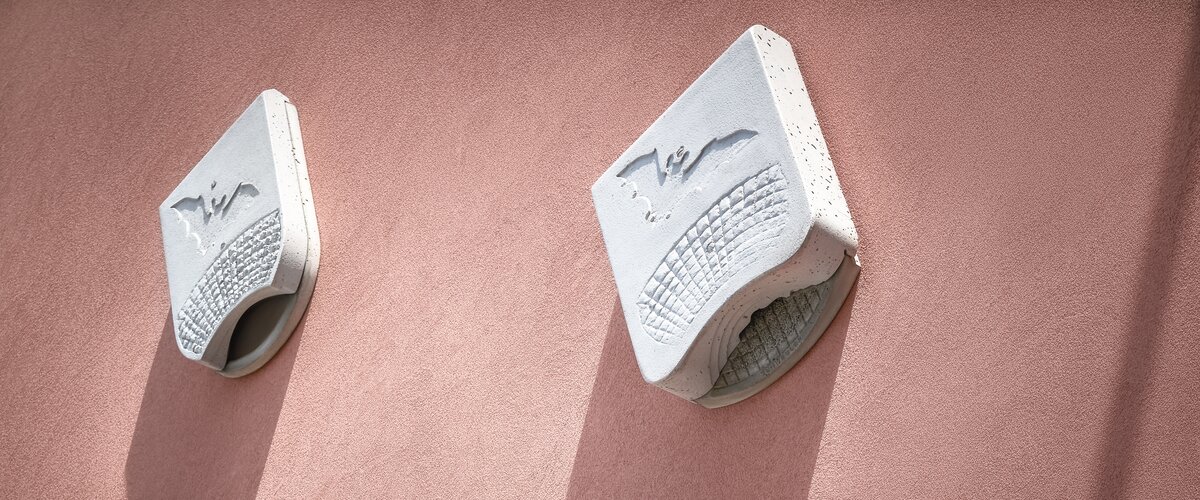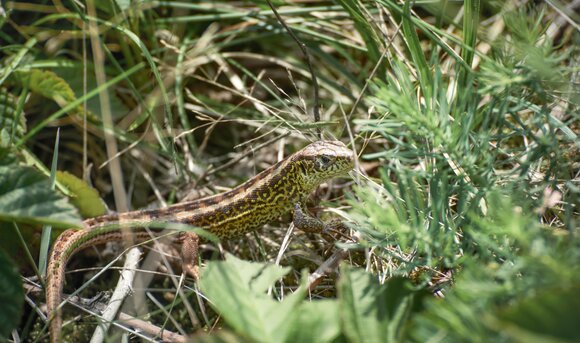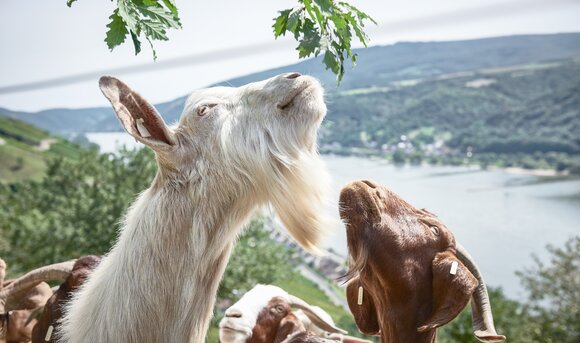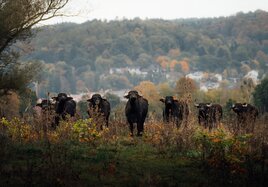There are bats lodging at many of Deutsche Bahn's properties. These winged creatures often seek shelter in old buildings, underpasses and tunnels. All of Germany's bat species have been protected by law for many years. So whenever we launch a building project in their old homes, we find the bats a new place to live, devising a solution for each specific species.
A hotel for barbastelle bats
For example, we converted an old brickyard at Ducherow in Mecklenburg-Western Pomerania into a hotel for the protected species of barbastelle bats, by inserting partitions into arches in the brickwork and drilling entrance holes for them to fly into.
Shelter in the trees
We have also created future living space for bats in forest areas along the new Wendlingen-Ulm line. We had trees with minor damage, such as knotholes and broken bark, removed from forestry use so that they could become homes for the bats. After all, forest bat species such as the noctule and the greater mouse-eared bat like to hide in old tree crevices and knotholes during the day. In order to secure the trees permanently for conservation and to prevent their felling, they were marked accordingly. In this way, they can develop into suitable bat lodgings despite or precisely because of their imperfections.
Should one of the old trees being used to house bats become irreparably damaged, either in a lightning strike or during a storm, we always look for a replacement. This approach means that we at Deutsche Bahn continually ensure that resident bat species have a suitable habitat.
A new home in old tunnels and railroad facilities
Also, following the closure of the 900-meter-long Schwarzkopf tunnel in Lower Franconia in Bavaria, when we filled it in with the excavated material from the new Falkenstein tunnel, we made a space with holes for bats to enter and set up their winter quarters. A home for bats has also been created at the Kaiserbahnhof station in Potsdam or at the Norddeich Mole station in Lower Saxony.
Bats also live at our rail lines in Upper Lusatia. So we converted some old military facilities, several bunkers and three watchtowers for the modernization of the Knappenrode-Horka line to make them bat-friendly. The first guests are already using the bunkers as their winter quarters. And the watchtowers will also be very popular with larger groups. The bats can use the places for courtship and mating and can raise their offspring undisturbed. Barbastelle bats and pipistrelles are especially happy here.






